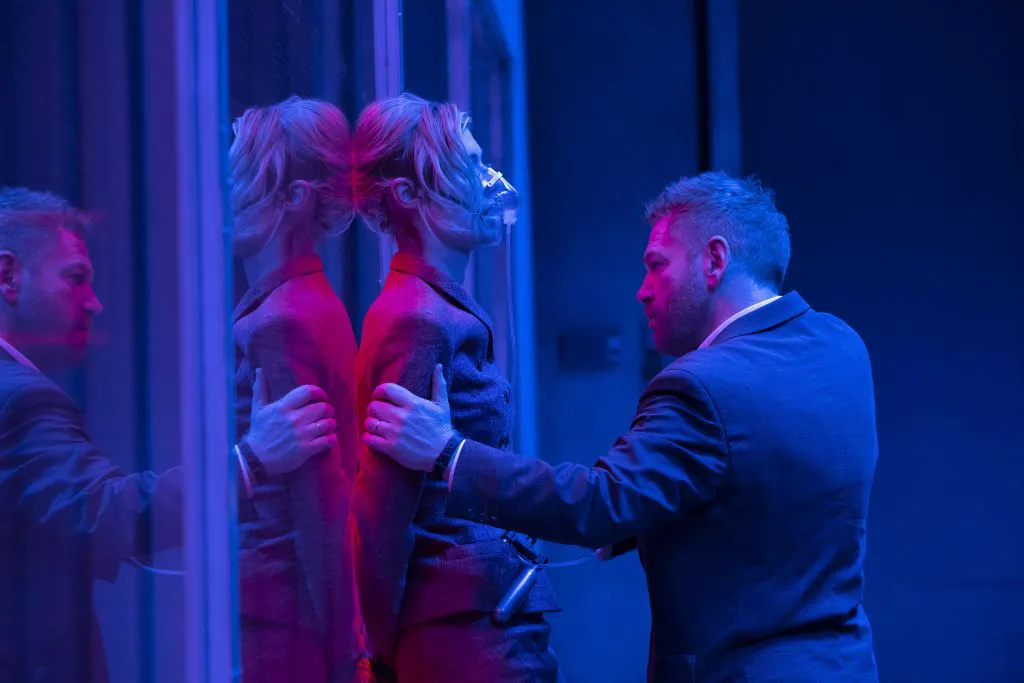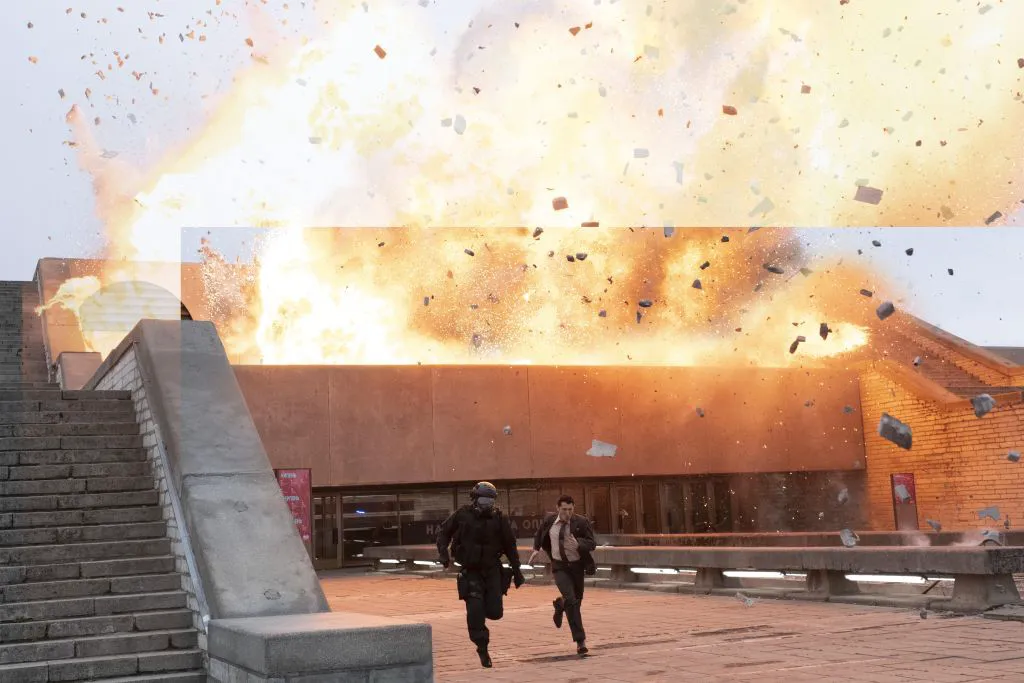Tenet: A Mind-Bending Espionage Thriller
After a daring attack on the Kyiv Opera House, a CIA agent finds himself captured. Facing interrogation, he swallows a cyanide pill. Awakening on a ship, he discovers his team has been eliminated, but he has passed a crucial test, granting him access to a top-secret mission. Armed with only a cryptic instruction – to clasp his hands and utter the word “Tenet” to gain entry anywhere – he must unravel the mission’s complexities. He soon learns that the world teeters on the brink of a new world war, this time fueled by inverted weaponry and vengeful descendants determined to erase their ancestors.

Describing the plot of “Tenet” is akin to recounting a meticulously crafted detective story, where every detail is significant and each character holds hidden depths. Christopher Nolan’s mastery is so profound that, divorced from context, plot points lose their spoiler potential. In the spirit of Nolan’s choice of a retro spy thriller with meticulously timed “wow” moments, and with audiences increasingly shielded by information overload, we’ll tread carefully when discussing “Tenet,” revealing enough to intrigue without giving away too much.
The Art of Omission
These very omissions are a hallmark of the film. “Tenet,” a visually stunning spectacle, is perhaps Nolan’s most literary work. It’s steeped in allusions, scientific paradoxes, Easter eggs, and Chekhov’s guns. The last time Nolan structured a story with such precision was in “Memento,” which cleverly intertwined reverse and linear timelines. In “Tenet,” these timelines intersect, culminating in a palindromic narrative that can be viewed in reverse.

However, literature isn’t Nolan’s sole inspiration. While crucial to the film’s foundation, 20th-century genre cinema serves as a guiding artistic force. Eschewing heavy-handed intertextuality (though nods to classics like “Casablanca’s” ending are present), “Tenet” demonstrates a deep understanding of genre conventions. Surprisingly unpolished visually until the midpoint, a deliberate choice, “Tenet” embraces the Cold War spy film archetype. This includes the stereotypical Russian villains, secret codes, James Bond-esque gadgets, and a charismatic protagonist with a mysterious past, delivering witty remarks and sporting stylish attire.
Embracing the Absurdity
Criticizing “Tenet” for these deliberate absurdities (or rather, genre tropes) is like faulting horror films for using the same unrealistic “final girl” and foolish teenager clichés. Nolan doesn’t aim for realism, despite the complex formulas sprinkled throughout the film. His style is a blend of hyperbole and over-the-top elements, preventing “Tenet” from becoming a serious drama. While he may have strived for that in “Interstellar,” the knowing smirks and deliberate cinematic clichés reveal the director’s playful intentions.

Nolan is often labeled a perfectionist, meticulously constructing his films while neglecting the “soul.” While the meaning of this criticism is debatable, audience expectations for relatable characters and situations may make “Tenet” a target. The characters are predictably genre-driven, operating within their archetypes. More importantly, the drama stems not from their thoughts and words, but from the manipulation of space and time. As the film progresses, hidden tragic collisions emerge, making the characters victims of circumstance, or rather, an inexplicable fate that governs all events. In essence, the emotional core of “Tenet” lies not in the conflicts, but in the structure of the plot itself. It’s calculated and precise, like a mathematical equation, yet mathematics can be beautiful, as seen in the Fibonacci sequence or Escobar’s theorem.

A Formal Experiment
Another common criticism is that Nolan makes overly intellectual, paradoxical, and complex films. This is partly true, but with caveats. “Tenet” is one of those films where viewers are encouraged to simply enjoy the experience without overanalyzing it. Approach it not as a skeptical critic searching for plot holes, but as an uninformed observer (much like Washington’s character). Despite its structural complexity, “Tenet,” like many of Nolan’s films, is primarily a formal experiment rather than a content-driven one. Outlining the plot points can describe the events, but it fails to capture the essence of the action.

If we revisit Nolan’s established labels, he is undoubtedly an architect. This well-worn opinion finds its strongest validation since “Inception” in “Tenet.” While not as emotionally resonant as the dream heist film, it’s more visually captivating. By connecting the past and future (literally in the conflict between ancestors and descendants), Nolan juxtaposes the archaic with the innovative. His film is entirely composed of constructs, whether genre-based or purely visual. Given Nolan’s fascination with space and time, the latter increasingly overshadows the modest spy narrative, transforming the film into the year’s biggest spectacle, complete with inverted chases, explosions, and fights.
Surrender to the Spectacle
Therefore, Nolan’s decision to have one of the characters say, “Don’t try to understand it,” seems like a generous gesture from an all-knowing creator. “Tenet” is not meant to be understood, but to be admirery detail and sound. The on-screen physics transcend themselves, altering the space of the theater: a postcard from the past (or future?) left by a mysterious mastermind. The magic of cinema is another label often applied to unique projects, but in this case, Nolan possesses a magical incantation capable of enchanting even the most skeptical viewer: Stop Making Sense, or as they say in a parallel timeline, esneS gnikaM potS.